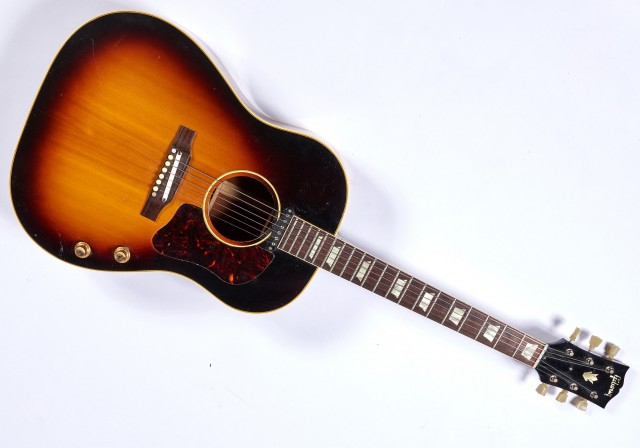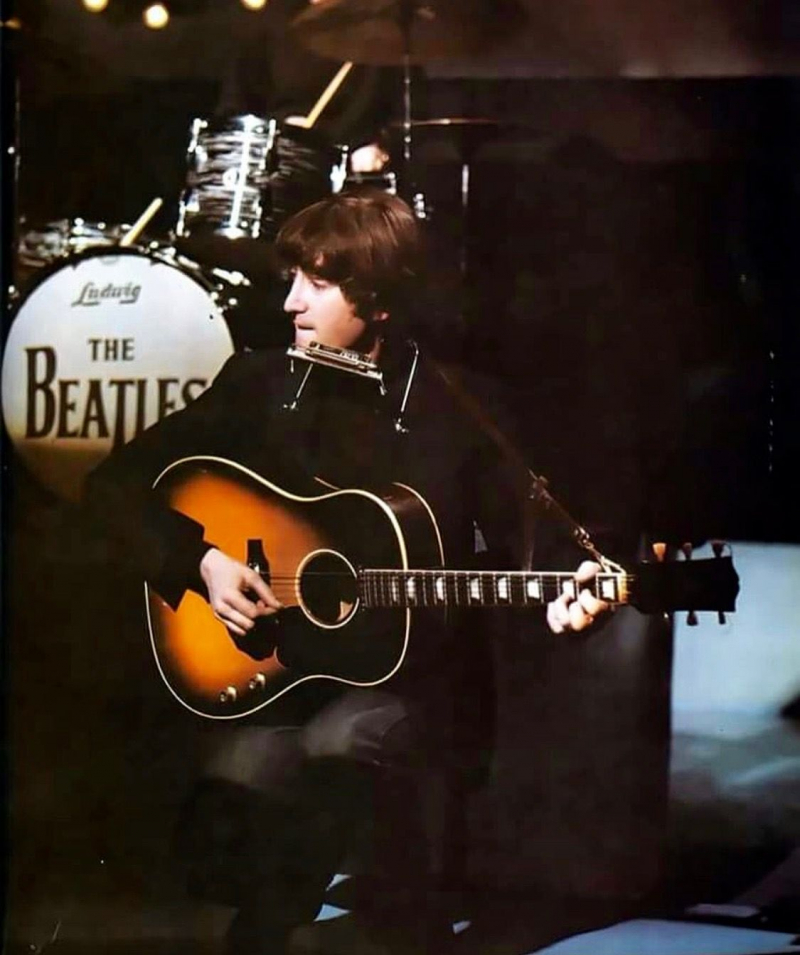The Gibson J-160E

The Gibson J-160E is one of the Gibson Guitar Corporation's earliest acoustic-electric guitars. Gibson's J-160E was their second effort at making an acoustic-electric guitar (the first being the small-body CF-100E). The main idea behind the guitar was to incorporate a single pickup onto a standard-sized dreadnought acoustic guitar. The J-160E's body was ladder-braced and made mostly of plywood, whereas other acoustic Gibsons were X-braced. The rosewood fingerboard had trapezoid inlays, and the bridge was adjustable. A single-coil pickup (an uncovered P-90 pickup) with pole screws protruding through the top near the end of the fingerboard was put beneath the top of the body for amplification, along with a volume and tone knob.
The Gibson J-160 E electric acoustic was one of a pair of nearly identical acoustic guitars purchased in London in 1962 by John Lennon and George Harrison. After the Beatles played a show in 1963, the guitar mysteriously vanished and was considered lost, only to emerge some years later.
Gibson makes a normal J-160E as well as a John Lennon J-160E Peace model based on the J-160E he used during the 1969 Bed-In. Epiphone produces a John Lennon replica signature model, the EJ-160E.
Price: $2.4 million











